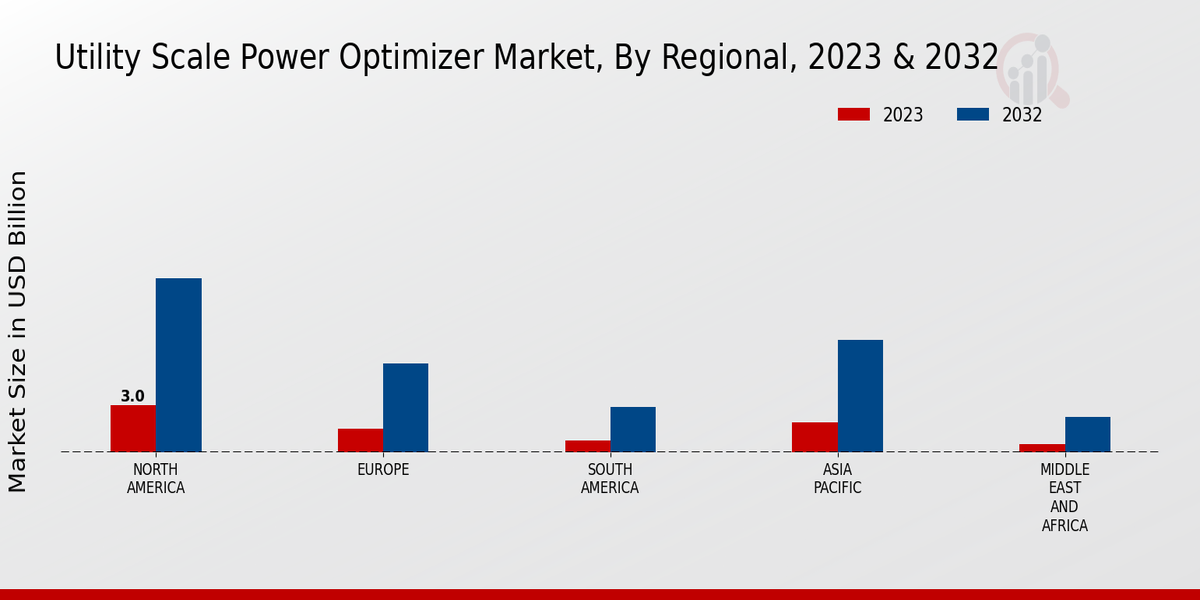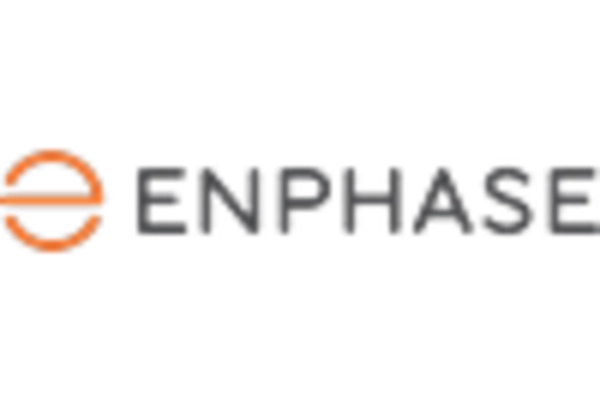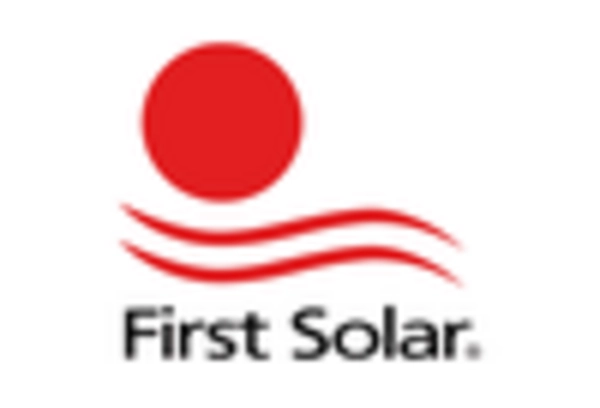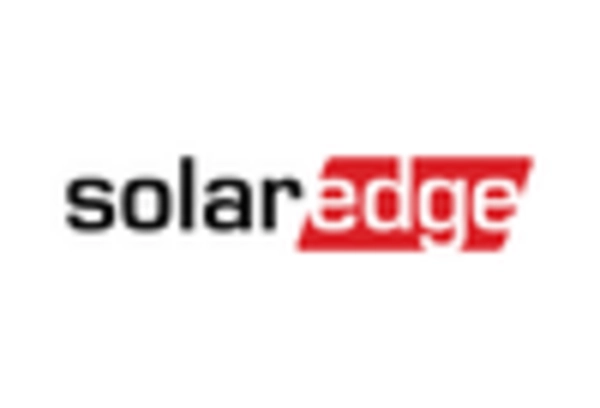Government Incentives and Policies
Government incentives and supportive policies are pivotal in shaping the Utility-scale Power Optimizer Market. Many countries are implementing favorable regulations and financial incentives to promote renewable energy adoption. For instance, tax credits, grants, and feed-in tariffs are being utilized to encourage investments in utility-scale solar and wind projects. These initiatives not only lower the cost of capital for developers but also enhance the economic viability of power optimization technologies. As a result, the Utility-scale Power Optimizer Market is expected to benefit from increased investments driven by these supportive frameworks, fostering a more robust market environment.
Growing Focus on Energy Efficiency
The growing focus on energy efficiency is a significant driver for the Utility-scale Power Optimizer Market. As energy costs continue to rise, utility operators are increasingly prioritizing solutions that enhance energy output while reducing operational costs. Power optimizers are designed to improve the performance of solar panels and other renewable energy systems, ensuring that they operate at peak efficiency. This focus on efficiency is further supported by various energy efficiency programs and initiatives that encourage the adoption of advanced technologies. Consequently, the Utility-scale Power Optimizer Market is likely to experience sustained growth as more operators seek to implement energy-efficient solutions.
Increasing Demand for Renewable Energy
The rising demand for renewable energy sources is a primary driver for the Utility-scale Power Optimizer Market. As nations strive to meet ambitious climate goals, the transition from fossil fuels to renewable energy sources such as solar and wind is accelerating. This shift is evidenced by the International Energy Agency, which reported that renewable energy capacity is expected to grow significantly in the coming years. Utility-scale power optimizers play a crucial role in enhancing the efficiency of these renewable installations, thereby making them more attractive to investors and operators. The increasing deployment of solar farms and wind parks necessitates advanced optimization technologies to maximize energy output and minimize losses, further propelling the Utility-scale Power Optimizer Market.
Rising Investment in Smart Grid Infrastructure
The rising investment in smart grid infrastructure is a crucial driver for the Utility-scale Power Optimizer Market. As utilities modernize their grid systems to accommodate renewable energy sources, the integration of power optimizers becomes essential. Smart grids facilitate better energy management, demand response, and integration of distributed energy resources. According to industry reports, investments in smart grid technologies are projected to reach substantial figures in the coming years. This trend not only enhances grid reliability but also creates a favorable environment for the deployment of utility-scale power optimizers, thereby driving growth in the Utility-scale Power Optimizer Market.
Technological Advancements in Power Optimization
Technological advancements are significantly influencing the Utility-scale Power Optimizer Market. Innovations in power electronics, data analytics, and artificial intelligence are enabling more sophisticated optimization solutions. These technologies allow for real-time monitoring and control of energy production, which enhances the overall efficiency of utility-scale projects. According to recent data, the integration of advanced power optimizers can lead to efficiency improvements of up to 20 percent in solar installations. As utility operators seek to maximize returns on investment, the demand for cutting-edge optimization technologies is likely to increase, thereby driving growth in the Utility-scale Power Optimizer Market.


















Leave a Comment